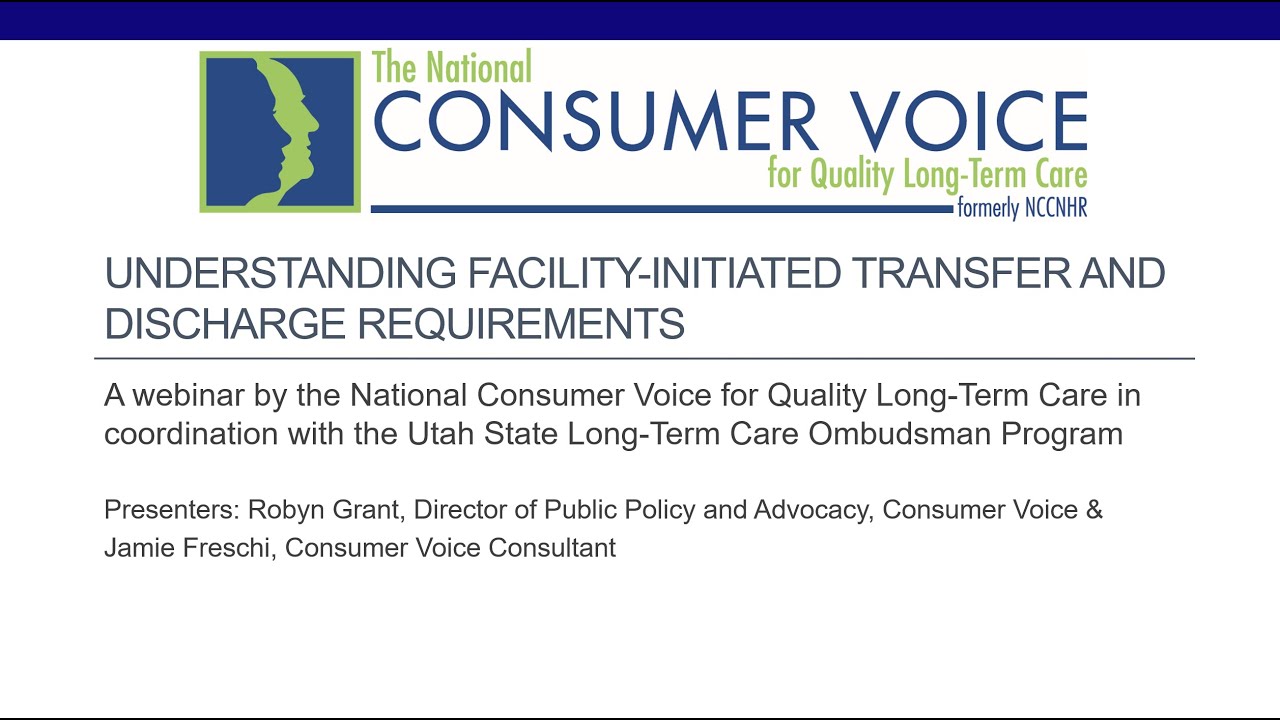Nursing home transfers/discharges, particularly when involuntary, can have serious negative effects on residents. Many residents experience transfer trauma, also known as relocation stress syndrome.
Since transfers/discharges can have a devastating impact on residents, it is important that they be prevented if at all possible, and carried out appropriately, safely, and carefully when they do occur. To that end, providers, ombudsmen, and other stakeholders charged with following, enforcing, or advocating for residents under the rules need to fully understand the requirements and guidance around transfer and discharge.
The following resources were developed by the National Consumer Voice for Quality Long-Term Care, in coordination with the Utah Office of the State Long-Term Care Ombudsman, to assist long-term care providers, ombudsmen, consumers, and other stakeholders in comprehending federal and state requirements around transfer and discharge rights and responsibilities.





